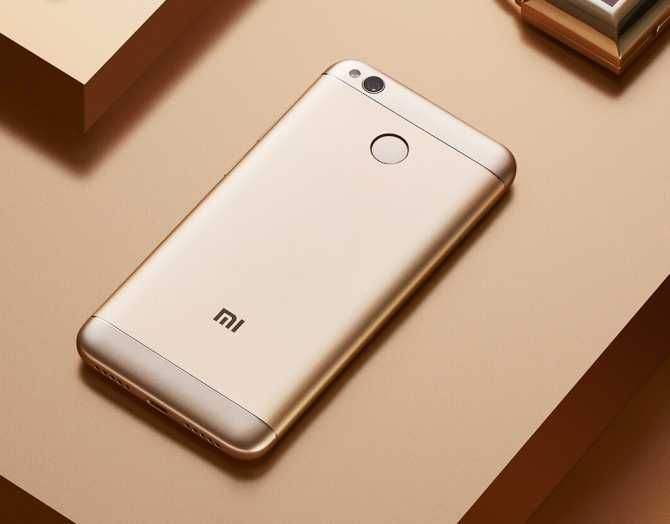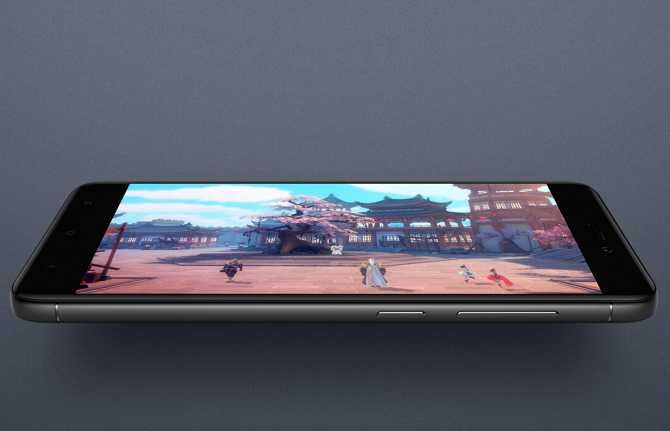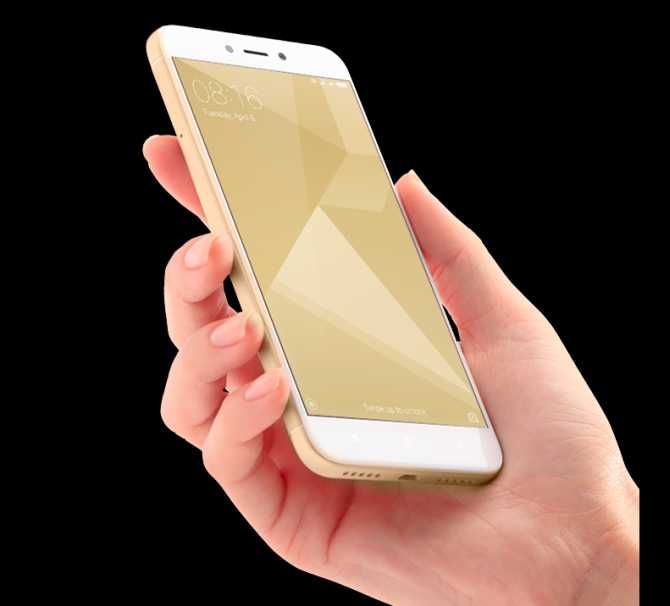The handset delivers on build quality, battery, design, ergonomics and a pretty decent display. The camera performance is not exactly ground breaking, but the price tag covers up for that slight blip, says Himanshu Juneja.

Xiaomi has been on a spree of sorts by releasing one budget smartphone after another. The move has not only allowed the company's name to stay afloat in the minds of the buyers, it has also enabled Xiaomi to make a killing with the sales of the refreshed handsets while retaining the title of budget king handset maker.
It is now a no surprise that the Chinese manufacturer is ready with another handset in the sub Rs 10k category.
The Xiaomi Redmi 4 is the company's attempt to again hit the sweet spot in this category. The phone seems all set to impress with a metal body, its heavy duty battery pack, and an okay camera.
How much water does the Redmi 4 hold with the heightened competition, and will Xiaomi be again rule the roost?
Another instance of being crowned as the budget handset king beckons?
Time for a closer look and get some answers.
Construction and built
The handset weighs a decent 150 gms, thanks to a beefy battery, and this also contributes to its thickness.
Dimension wise, the phone measures 139.2 x 70 x 8.7 mm. The build quality of Xiaomi Redmi 4 really shines through.
The back panel is majorly metallic, which is a rare occurrence given the price segment. The top and bottom parts are polycarbonate bits to assist with the signal reception, and these do not look out of place, thanks to the body coloured scheme. However, the plastic parts are not flush in line with the metal.
It is not likely that the user will feel the discomfort while handling the phone, such is the nature of the built.
The fingerprint scanner is located at the back and is easily reachable, and the protective ring around the camera lens is a thoughtful inclusion.
The back panel has been given a slight curve, and together with the rounded corners, it assists in the gripping of the handset. That said, the back is a fingerprint magnet and users may find themselves frequently wiping the phone.
Coming to the button placements, the top edge carries a 3.5 mm audio jack, and an Infra Red emitter. The right edge is stacked with the power and volume buttons.
Finally, the bottom edge has the micro USB port and the speaker grilles. There is only one speaker though.
The construction is pretty impressive, and the only complaint that there can be, is about the navigation buttons not being back-lit. Otherwise, the handset looks and feels quite premium.
Display

The IPS LCD on the Redmi 4 is a 2.5D curved glass variant, and measures 5 inches. The adoption of a curved glass display brings something extra to the table, and is a first for Xiaomi in the given price range.
There were no surprises with the 720 x 1280p resolution for a sub Rs 10,000 phone. The pixel density sits at 294 ppi level, which is quite decent.
This was clear with the sharp display rendered by the screen. The panel has decent viewing angles and ample brightness levels.
Using it under direct sunlight was a non issue. Colours never looked washed out, and users get to tinker around with the saturation levels as per preference.
Xiaomi has included a reading mode which should benefit users with a penchant for reading.
Specifications
Qualcomm's Snapdragon 435 SoC has been increasingly finding favour with the budget segment players, and Xiaomi too decided to go with the same. The Octa core processor here is clocked at 1.4 Ghz, while Adreno 505 serves as the GPU.
Xiaomi has introduced three variants of the handset for the Indian market. The first one comes with 2 GB of RAM and 16 GB of storage capacity.
The second variant has 3 GB of RAM and 32 GB of storage. The third variant carries 4 GB of RAM and 64 GB of storage space.
Should the user get cramped for space, they can always increase it by another 128 GB by making the use of the hybrid SIM slot.
Connectivity
The hybrid dual SIM/MicroSD card slot has never been a favourite amongst the users, but it has been the popular way for the manufacturers to provide something extra with minimum design alteration. We see this happening here as well, and the price bracket helps Xiaomi get away with this as well.
The 4G enabled handset supports VoLTE technology, but the primary SIM slot will be allowing the 4G calls and data, while the secondary SIM slot will allow only for the 2G calls to take place.
Apart from this, we have the usual options like WiFi (802.11 b/g/n), Bluetooth (ver 4.2), Infra Red communication, and GPS navigation. FM radio being onboard is a good inclusion and increases the overall value of the handset.
Operating system
Redmi 4 comes with Android 6.0.1 Marshmallow out of the box, and has Xiaomi's MIUI 8.2 skin applied. The update to Nougat has been confirmed by Xiaomi, which makes up for a good news for the prospective buyers.
There is also a possibility of getting Google Assistant onboard in the future.
Xiaomi has ensured that MIUI sees some improvements, like being a bit more fluid and imparting touches like getting intrusive SMS under one notification tab. But the presence of bloat still remains an issue.
We see apps like Amazon, Flipkart, Facebook and PhonePe among others.
There are in house apps present too, like Mi community, Mi Picks, Mi Store apps etc to compound the issue. While users can get on these apps instantly, the choice should have been left with them for installation.
The handset carries a budget SoC, and small steps like keeping bloat to a minimum go a long way in ensuring performance as well as establishing a more confident outlook towards the handset.
Moving over to the features, Second Space and Dual Apps stand out. The former allows for a separate profile to segregate business and personal context, while the latter enables users to have two instances of apps like Whatsapp, Twitter, Instagram etc for privacy and enhancement purposes.
The Quick Ball feature allows users to have quick access to shortcuts for the desired apps and options. Users can make use of the theming app to configure the look and feel.
Scrolling screenshot happens to be a favourite amongst many users, allowing for screen grabbing of entire webpages. There is a reader mode for the bookworms especially, a child mode for better device management with kids, and a one handed mode to prevent awkward fumbling of the phone while reaching out for the notifications.
The Mi account grants the users 5 GB worth of cloud storage, which is a good touch.
Performance
Redmi here is a bit of a mixed bag really. The good thing is that the performance in general is pretty okay, but there can be frustrating times.
There were lags observed while loading of the apps took place, and these are bound to prove bothersome during crunch situations. Thankfully, once loaded, there were no issues using the apps per se, which makes for a good case for choosing this premium handset with budget pricing.
HD content, especially games will stutter at times, making this handset not the ideal companion for heavy gamers. The handset did get a bit warm with the strenuous tasks, but it was nothing to raise the alarms.
The speaker was loud and clear, while the audio via headphone jack seemed pretty decent. The fingerprint scanner was accurate, working as per the expectations most of the times.
Camera

Redmi 4's rear camera is an f/2.0 apertured 13 MP unit, complete with phase detection auto focus, and an LED flash. A 5 MP rear camera is what we see at the back.
The camera is not the strongest suite of the Redmi 4, but it is still capable of grabbing some decent snaps.
The focusing was quick, and the pictures had some good details while colours looked lively. These are perfectly shareable over social media sites.
Zooming in however revealed the budget constraints, as grains were visible quite clearly. Finer details too struggled to appear in the captured pics.
HDR mode is present, but it is not the panacea for all the tricky situations.
Once summoned, the colours definitely showed vigour, but there were a lot of instances where details instead got blurry and yielded below par results.
Saving times were long, ensuring that the users need to stay put in place till post processing was done, or be risking botched results.
As long as the pics are being taken in well lit situations, things largely are fine. Snaps taken at dusk or with less ambient light did go haywire.
The grains increased and the image quality, though not terrible, went down considerably.
The videos can be recorded at 1080p or 720p, and the results were pretty good, provided there is enough light around. The front facing camera delivered passable selfies.
Battery
The handset comes with a non removable 4100 mAh battery inside, and it was good to see a heavy duty pack being included.
With a moderate to heavy usage, one can easily get by an entire day without needing to charge the phone.
A relatively light weight usage pattern can even deliver two days worth of mileage with the Redmi 4. There are power saving modes at hand for tighter situations.
The handset supports Quick Charge 3.0, but Xiaomi decided against providing the relevant charger, possibly to keep the cost down. Users should be able to grab the charger separately.
Verdict

Xiaomi has been a trendsetter since quite some time, and it seems like they have yet again delivered a knock out product for the budget category shoppers.
The Redmi 4 does most of the things right, and if the loading times can be ignored, this premium looking handset will have no problems in flying off the shelves. Availability can be an issue as per Xiaomi's history.
The 2 GB RAM/16 GB model has been priced at Rs 6,999. The 3 GB RAM/32 GB model carries a price tag of Rs 8,999, and the 4 GB RAM/64 GB variant costs Rs 10,999.
The phone went on sale today via Amazon India and Mi.com website and was sold out within five minutes. Amazon offered a generous offer of 45 GB of free data from Vodafone, promotion credits for Kindle books worth Rs 200, Hungama Music subscription for 12 months, and Hungama Play subscription for 3 months, while Mi.com offered 5 per cent discount via select credit cards.
The handset delivers on build quality, battery, design and ergonomics, as well with a pretty decent display. The camera performance is not exactly ground breaking, but the price tag covers up for that slight blip.
Even with the top model of the Redmi 4, the 435 SoC is not an ideal setup for the gamers, and buyers would do well to grab Moto G5 Plus, which would be a justified investment.










